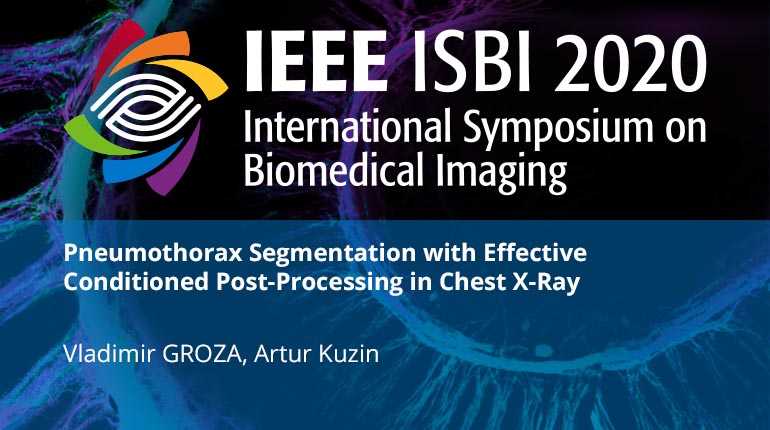
Already purchased this program?
Login to View
This video program is a part of the Premium package:
Pneumothorax Segmentation with Effective Conditioned Post-Processing in Chest X-Ray
- IEEE MemberUS $11.00
- Society MemberUS $0.00
- IEEE Student MemberUS $11.00
- Non-IEEE MemberUS $15.00
Pneumothorax Segmentation with Effective Conditioned Post-Processing in Chest X-Ray
Pneumothorax can be caused by a blunt chest injury, damage from underlying lung disease, or it may occur for no obvious reason at all. This is one of the complex problems to detect by human eyes, which can be solved with very high level of accuracy and simplify the clinical workflow. In clinical workflow pneumothorax is usually diagnosed by a radiologist and can sometimes be difficult to confirm, that's why one need an accurate AI detection algorithm. In order to improve the detection quality and performance automatic AI-based solutions became very popular. Recently deep learning approaches demonstrate its potential and strenghts in the medical image processing and problems which are very poorly visually distinguishable by human eyes. Proposed method presents the segmentation pipeline from the chest X-ray images with the multistep conditioned post- processing, resulting in significant improvement compare to any ?baseline? by decreasing the missed pneumothorax collapse regions and false positive detections. Obtained results demonstrate very high performance accuracy and strong robustness due to very similar performance on the double-stage test dataset with previously unseen distribution. Final Dice scores are 0.8821 and 0.8614 for ?stage 1? and ?stage 2? test dataset respectively what is resulted in top 0.01% standing of the private leaderboard on Kaggle competition platform.
Pneumothorax can be caused by a blunt chest injury, damage from underlying lung disease, or it may occur for no obvious reason at all. This is one of the complex problems to detect by human eyes, which can be solved with very high level of accuracy and simplify the clinical workflow. In clinical workflow pneumothorax is usually diagnosed by a radiologist and can sometimes be difficult to confirm, that's why one need an accurate AI detection algorithm. In order to improve the detection quality and performance automatic AI-based solutions became very popular. Recently deep learning approaches demonstrate its potential and strenghts in the medical image processing and problems which are very poorly visually distinguishable by human eyes. Proposed method presents the segmentation pipeline from the chest X-ray images with the multistep conditioned post- processing, resulting in significant improvement compare to any ?baseline? by decreasing the missed pneumothorax collapse regions and false positive detections. Obtained results demonstrate very high performance accuracy and strong robustness due to very similar performance on the double-stage test dataset with previously unseen distribution. Final Dice scores are 0.8821 and 0.8614 for ?stage 1? and ?stage 2? test dataset respectively what is resulted in top 0.01% standing of the private leaderboard on Kaggle competition platform.
 Cart
Cart Create Account
Create Account Sign In
Sign In





